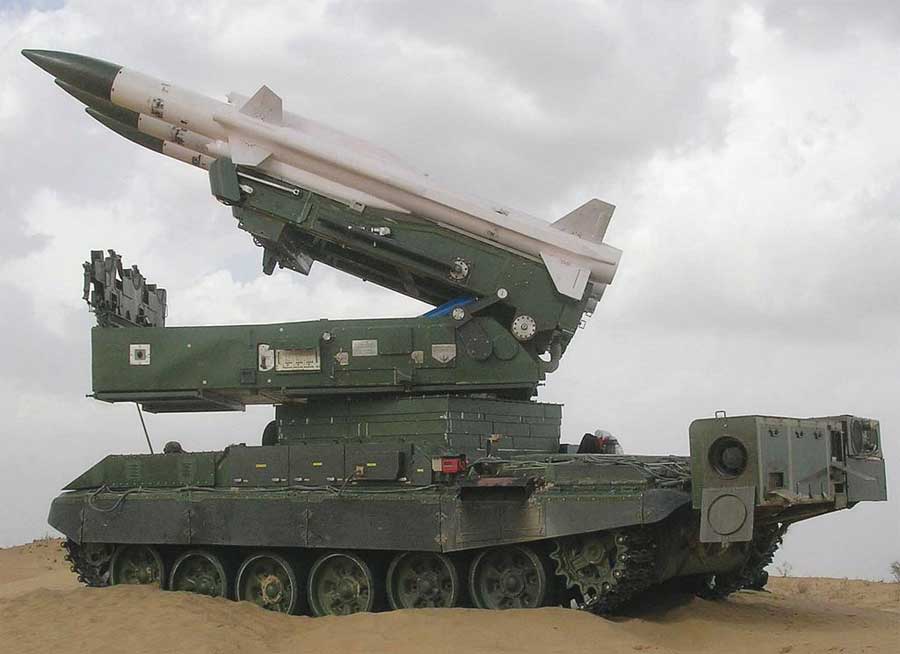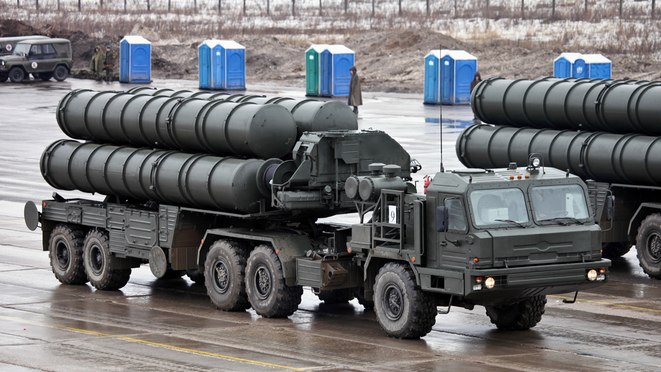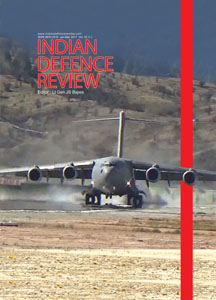Countering an emerging, modern multi-vector and multi-element air threat will need a modern air force and an equally modern ground-based, air defence system based on modern missiles and guns. Modernisation of ground-based, air defence weapons through acquisition/indigenous development, where possible, is long overdue. There is flip flop about S 400 and Barak 8 is just getting off the drawing boards. For the present, besides some refurbishment of decades old weapons, which may be lots of money down the drain and acquiring the ill-fated Aakash system, there does not appear to be anything on the horizon. Possibly the wait will get longer.
There will be greater use of technologically advanced weapons to kill a much larger number of enemy combatants with ease…
Twenty-five years ago today, President George H.W Bush announced the execution of Operation Desert Storm. It was not only a historical geopolitical moment that changed the course of events but is widely seen as the introduction of modern “smart” warfare driven by miniaturised computer technology and reliance on precision air power. Over five weeks, coalition aircraft rained weaponry from the skies over Iraq and Kuwait. The ground forces then stormed across the deserts of Saudi Arabia into Kuwait and Iraq. Just over four days after the commencement of ground assault, Iraq capitulated and a ceasefire was agreed to.
The Gulf War began on January 17, 1991, with an extensive aerial bombing campaign. The Coalition flew over 100,000 sorties, dropping 88,500 tonnes of bombs,extensively destroying military and civilian infrastructure. The air campaign, commanded by USAF Lieutenant General Chuck Horner who briefly served as the US Central Command’s Commander-in-Chief – Forward while General Schwarzkopf was still in the US. —Gulf War, Wikipedia
Ground Based Air Defence: 21st Century Battlefield Milieu
Any future war will roughly follow the narrative described above: a massive aerial bombing campaign for near total destruction of the enemy forces, enemy military and civilian infrastructure and annihilation of the enemy’s ability to wage and sustain wars for a long time; while the ground forces wait, out of the danger zone, at a safe distance. In the twenty-first century, there will be some modifications to the narrative:
• There will be far greater use of technology for surveillance, near total situational awareness and battlefield transparency. The exact location of the enemy will almost always be known. There will be no blind spots, which may obstruct real-time decision making.
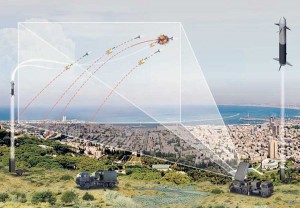 • There will be greater use of technologically advanced weapons to kill a much larger number of enemy combatants with ease without exposing own combatants to danger.
• There will be greater use of technologically advanced weapons to kill a much larger number of enemy combatants with ease without exposing own combatants to danger.
• Stand-off engagements by ‘warriors’ conducting battle from thousands of miles away, from the comfort of air-conditioned operation centres while killing unsuspecting enemy will, for the affluent nations at least, become a norm.
In the past, it was enough to deter a manned flight from pressing home the attack…
• An aspect regarding the intense use of electronics will be the adversaries attempting to deny the use of electro-magnetic spectrum to each other. Nations with advanced technologies will have a clear advantage in this area wherein the lesser prepared adversary may have all communication and non-communication electronics downgraded to a level of very low performance or total non-performance.
• Over a period of time, manned flights, at least by the affluent and technologically advanced nations, will make way for unmanned fighters and bombers engaging the enemy in the air as well targets on the ground with no fear of pilots being killed by enemy action.
• Thus an important universal change in the nature of air threat will be the use of weapon carrying Unmanned Aerial Systems (UAS) in large numbers.
• In the coming decades, this part of the narrative will play out an even more destructive role based on technologically advanced weapon platforms and weapons, without the fear of serious loss of human life, based on near total battlefield transparency and complete awareness of the battle situation.
• Besides the fighter aircraft, modern air threat will be from UAS in large numbers, missiles of various kinds and capabilities, rockets and artillery shells. These threat elements, very accurate and delivered in large numbers, with the ability to inundate a given segment of the airspace, will have a profound impact on the conduct of air defence battle. Such an air threat will need a variety of air defence weapons with different capabilities, deployed around the critical assets to engage the threat with ever-changing profile.
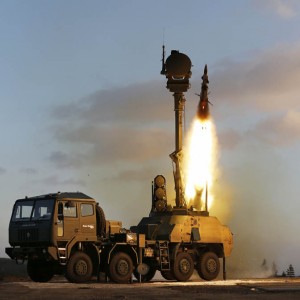 • In the past, it was enough to deter a manned flight from pressing home the attack. With the unmanned flights in very large numbers, it will become imperative to simply destroy the threat or else suffer serious damage or hindrance to ground operations because the man in the cockpit, who was deterred, has been taken out.
• In the past, it was enough to deter a manned flight from pressing home the attack. With the unmanned flights in very large numbers, it will become imperative to simply destroy the threat or else suffer serious damage or hindrance to ground operations because the man in the cockpit, who was deterred, has been taken out.
• Thus while the air campaign gets underway, the only component of the opposing side, besides the fighter aircraft, which will be involved in stopping the tide will be the ground-based air defence weapons.
The possibility of a coordinated action by the two neighbours can amplify the threat manifold…
Asian Battlefields of the Future
To be fair, it needs to be pointed out that the narrative quoted above will be somewhat different in our context. While our adversaries for the present, may not have the UAS capability described earlier, but they have sufficient number of fighter aircraft of different vintages, in some cases dated technology but capable of offensive action.
In case of Pakistan these include an American gift of F-16s to the Pakistan Air Force, purportedly to be “used in war against terror”! Both our adversaries have fairly large inventories of modern missiles, which can strike any part of our country. They also hold large inventories of rockets and artillery, which can strike targets fairly deep into our territory. With a rapid, intense and in parts India-centric modernisation of the People’s Liberation Army (PLA) and spin-off benefits to the Pakistani armed forces in the form of hand-me-downs of Chinese weapons, our adversaries will have sufficient inventories to cause serious damage unless checked in time.
The Aerial Threat
The power and reach of modern aerial threat to create a disproportionate advantage for the side with a superior, state-of-the-art, full spectrum range of modern aircraft and other constituents of the aerial threat is a well-established military reality. Our adversaries, with somewhat dated or not-so-modern equipment, have the intent, the quantity of resources and the capability to seriously threaten our air space as well as assets anywhere on the ground. The possibility of a coordinated action by the two neighbours can amplify the threat manifold.
The modern aerial threat will not be composed of manned aircraft only…
With continued focus on modernisation of the Indian Air Force (IAF), which is a very visible and politically appropriate action by any government, we will have the desired quality and numbers to be a force in-being as well as a very potent force to impose our will on our adversaries. Unfortunately, an important aspect, which does not get the attention it deserves, is that the protection of our air space as well as security of our ground-based critical assets need, besides a very modern and numerically adequate air power, a modern ground-based air defence force, which can, in a coordinated manner, counter a modern, potent and wide spectrum, multiple constituent aerial threat.
It will be fair to mention here that while we are striving to have a fairly modern air force, the ground-based air defence weapons inventory of the Indian army, in terms of numbers, is grossly deficient to protect our ever increasing list of vulnerable national assets and qualitatively the present inventory, consisting of vintage weapons, is simply inadequate to fight an effective air defence battle.
The modern aerial threat will not be composed of manned aircraft only. Advancements in technology have brought about some important changes in the composition of the air threat. These are:
• Long range missiles and rockets are comparable in shape, size and radar signatures to any modern fighter aircraft. With a somewhat predictable flight behavior, these aerial objects, in some cases, can be far more destructive against the elements on ground vis-à-vis the fighter aircraft. These threat elements need to be detected, established as hostile and destroyed well before they can cause any damage.
A nation is expected to have thousands of critical assets which merit air defence protection…
• Another, very revolutionary concept to emerge in the recent times is the introduction of UAS in the weapons inventory. From merely being a reconnaissance/surveillance resource, to create an unprecedented battlefield transparency and for very realistic situational awareness, to help decision making by commanders at different levels, the UAS has come to symbolise a new paradigm for war fighting wherein, in the years to come, some nations may not have to send their pilots to fly missions over enemy territory and yet cause unprecedented destruction by using pilotless aircraft. For the present, this threat may be minimal in our part of the world yet it must be included in any consideration for equipping a modern ground-based, air defence force, which for the present has no modern weapon system.
• An important distinction must be made at this stage about the capability of different types of weapon systems and platforms. While the modern fighter aircraft can very accurately deliver a large inventory of air-to-ground and air-to-air weapon loads, can engage enemy aircraft in dogfights and a host of other activities, they are simply not suitable to detect and engage in flight rockets/missiles and in some cases, even UAS. Besides other characteristics, sometimes the numbers may just inundate the fighter aircraft.
• A very significant operational distinction between the manned aircraft and missiles/rockets/UAS is that these threat elements cannot be deterred and will have to be destroyed to prevent any loss or damage. This distinguishing feature should drive our plans for acquisition and modernisation of the ground-based, air defence systems. Out of necessity, our ground-based air defence system will have to primarily comprise missiles, in various configurations, capable of hit-to-kill strikes or with very high kill probability and gun systems capable of providing effective close protection.
Modern, long-range, air defence missiles can even engage and destroy threat of any kind, including aircraft en route to strike an asset.
• At this stage, two features of modern ground-based air defence weapons need to be highlighted:
. • With a vast array of radars deployed for long range detection, tactical control and weapon guidance, the ground-based, air defence system has the ability to detect these objects similar to detecting any other flying objects such as fighter aircraft/helicopters. The system will detect every missile/large rocket/UAS in the given expanse of air space.
. • Having detected the target, the ground-based, air defence system has the ability to nominate the most suitable weapon system to engage and destroy the threat including missiles/rockets/UAS/ aircraft. In case of multiple targets, the system will simply nominate different weapons to simultaneously engage different targets attacking the same asset or engaging a number of contiguous assets. With adequate numbers, the ground-based, air defence system cannot be inundated. Modern, long-range, air defence missiles can even engage and destroy threat of any kind, including aircraft en route to strike an asset. It will be appreciated that the air defence response described above will invariably be air defence missiles with different characteristics.
. • Ground-based air defence even has the capability to engage mid-trajectory and destroy artillery shells in flight; a system which we may also need to protect our cities such as Amritsar and Firozepur.
Need for a Missile-Based Destructive Air Defence System
For the present, our ground-based air defence system is largely a deterrent force, with minimal resources to effectively protect our airspace as well as critical assets. We need to create a weapon mix, multi-tiered, ground-based, destructive air defence system, which will be able:
There have instances of an overwhelming employment of the air power to decimate the enemy…
• To counter the emerging aerial threats of the 21st century for the next four to five decades.
• To protect all ground-based critical assets, to which threat has been appreciated, located anywhere in the country including some of the coastal assets as well as Tactical Battle Space and Assault Formations undertaking offensive in the enemy territory.
• To effectively relieve the IAF of air defence duties and depending on the battle situations, which preclude any potential conflict situations, to completely sanitise a given segment of the airspace of any enemy air activity e.g. over the Tactical Battle Area.
The above mentioned multi-tiered, destructive, ground-based air defence system will need a number of different types of weapons arrayed in a capability-based air defence architecture, which will protect our national air space, in co-ordination with the IAF as specified or whenever an opportunity arises and protect our critical assets when faced with a very intense, modern air threat. This architecture, which also defines the role of any given weapons system, will comprise the following:
- Long Range Air Defence Missiles with range greater than 100 km.
- Medium Range Air Defence Missiles with range up to 60 km.
- Short Range Air Defence Missiles with range up to 30 km.
- Close Defence Protection Air Defence Missiles with range up to 10 km.
- Air Defence Guns with range over four km
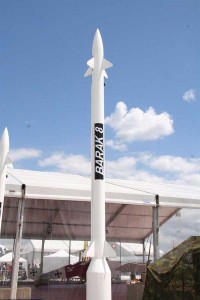 An analysis of this architecture would show the primacy of missile systems in the air defence layout because of their obvious advantage of ranges to meet different requirements and their superior destructive capability. That notwithstanding, air defence guns have a very important role in protecting critical assets.
An analysis of this architecture would show the primacy of missile systems in the air defence layout because of their obvious advantage of ranges to meet different requirements and their superior destructive capability. That notwithstanding, air defence guns have a very important role in protecting critical assets.
An important aspect, which will not be analysed in this paper is the Operational Control and Early Warning part of the air defence architecture. Elements which enable the air defence architecture to perform their tasks are:
- A very extensive network of long range radars to detect the threat and alert the air defence system.
- A fully automated data management and communication system, which can collect, collate and evaluate information and disseminate intelligence to create theatre-wide situational awareness and battlefield transparency for prioritisation and nomination of the most appropriate system to counter the threat in near real time.
- An extensive network of fire control radars, which can accept assignment of a target, in real time and effectively direct the weapon systems to engage the target.
A sustained air campaign based solely on aircraft may not happen in the foreseeable future…
Deployment of Ground-Based Air Defence Systems
The deployment of ground-based air defences is centred on the critical assets which need to be protected. A nation is expected to have thousands of critical assets which merit air defence protection. Depending on the threat or significance of the asset, the deployment can be in an array of different weapons in multiple tiers. Each tier is meant to counter a specific threat or a group of threats. The asset may be a point asset such as a radar station, a group of contiguous or an area asset such as an airfield or an urban centre such as a part of the city of New Delhi.
Air Defence Architecture: An Array of Weapon Systems
Airspace as a traverse medium offers infinite options to the airborne vectors to manoeuvre, approach a critical asset and deliver the weapon load in a myriad ways. This unhindered movement of the threat through the airspace creates some deployment imperatives for the ground-based air defence weapons which establish the need for an array of weapons required to protect the assets.
Some peculiar features of the air threat, which warrant presence of a wide spectrum of air defence weaponry to be able to engage the threat, are the Unhindered Approach, Unlimited Manoeuvre Space, Stand–off threats and the possibility of inundation of a given segment of the space. These features need to be explained to establish the requirement of an array of ground-based air defences.
Unhindered Approach
Airspace as a medium of traverse for objects moving through it does not offer any impediments. The threat can approach a critical asset from any direction. Technology also allows modern aerial weapon platforms to fly at very high altitudes or at tree-top heights to avoid detection. This ability of the threat to approach practically from any direction makes it imperative for the air defence system to observe the entire space in their vicinity and be prepared to respond to any identified threat.
Dedicated air defence weapons provide close defence protection to nominated, important critical assets…
Unlimited Manoeuvre Space
The airspace, without any obstacles, also offers nearly unlimited manoeuvre space for the threat to adopt any attack profile, based on its own design configuration, which is most suitable for effective delivery of weapons at the weapon release line.
A ground-based, air defence system, with weapons deployed in suitable configuration or a mix of different types of weapons should be able counter the threat adopting any attack profile well before the delivery of the weapon load in case of aircraft and before any missile or rocket getting into an attack profile.
Stand-off Threat
This threat by modern aircraft, wherein the weapon is delivered a long distance away from the critical asset which is to be attacked, the aircraft follows it for sometime till the target is acquired by the weapon and the aircraft moves away. In this case, there are two threat targets, which must be addressed i.e. the aircraft which is moving away after delivering and guiding the weapon load and the weapon load itself, which may be a missile or a bomb. Presence of long range missiles in the architecture, a new addition, will resolve this problem. Some of the modern air defence missiles with ranges of over 60 km or more will be able to detect all threat objectives, including the aircraft with stand-off weapons, well before they are able to release their weapons.
Inundation
There have instances of an overwhelming employment of the air power to decimate the enemy. But in our part of the world, a sustained air campaign based solely on aircraft may not happen in the foreseeable future. However, with UAS, missiles, rockets and artillery now being part of the threat, the enemy has the ability to inundate the defences for short durations at a given point. An array of weapons, with different capabilities, deployed in a manner to provide all round defence and co-ordinated layouts for contiguous assets, the ground-based air defences should have the ability to engage a number of threats simultaneously.
Missile systems deployed for protection of critical assets should have high kill probability…
Having analysed the imperatives for an array of weapons with different features to counter the threat, there is a need to identify some essential attributes in the weapons, which result in effective engagement of the threat.
Destructive Air Defence
The hit-to-kill ability to destroy the threat or to push it off course is a very important feature of some modern air defence missiles. The weapon system may also carry a warhead, which explodes after the initial penetration enhancing the lethality of the weapon. This capability coupled the ability to engage multiple targets is truly the best form of destructive air defence in the air defence architecture.
Kill Probability
Missile systems deployed for protection of critical assets should have high kill probability, which can be enhanced by a higher rate of fire. A single missile fired against an aerial threat may have a kill probability of 40 to 45 per cent. However two missiles against the same target may enhance the probability to over 95 per cent.
Mobility
For air defence protection to be effective, the weapon must reach the location of the asset to be protected. The weapon system can be static, semi-mobile or self-propelled. Modern air defence weapons, irrespective of their collective size of various components and support equipment, have the ability to reach the threatened location to provide effective protection. Self–propelled missile and gun systems have the ability to provide protection to mechanised elements in the war zone and they keep pace with the progress of operations.
Modern air defence guns are a combination of detection devices, guns and elements for operational control.
Close Defence Protection
Dedicated air defence weapons provide close defence protection to critical assets. Close defence protection can also be in the form of man-portable missiles, self-propelled guns/missiles or only guns. Close support by a gun system is a time-tested method to protect critical assets when everything else fails. Some air defence guns on manual or only the local power control, without any radar guidance, can continue to protect a critical asset even in total jamming of all electronics. Protection by guns in the past was simply firing large quantities of ammunition in the probable path of the aircraft to exploit the possibility of the aircraft flying into exploding ammunition or the pilot deciding not to press home the attack.
Modern air defence guns are a combination of detection devices, guns and elements for operational control. These systems can fire a large number of rounds of smart ammunition with thousands of sub ammunition, which enhance their lethality to a level of being a destructive weapon. Indian air defence inventory has a very large number of 40 mm L/70 guns; over 40 years old and despite efforts to modernise them, will not be much use in a modern battlefield. Guns, identified as the last rung in the air defence architecture, have a very important role in conduct of air defence battle. We need modern air defence guns in thousands to protect our air space and critical assets.
Conclusion
Countering an emerging, modern multi-vector and multi-element air threat will need a modern air force and an equally modern ground-based, air defence system based on modern missiles and guns. Modernisation of ground-based air defence weapons through acquisition/indigenous development, where possible, is long overdue. There is flip-flop about S-400 and Barak-8 is just getting off the drawing boards. For the present, besides some refurbishment of decades old weapons, which may be lots of money down the drain and acquiring the ill-fated Aakash system, there does not appear to be anything on the horizon. Possibly the wait will get longer.




